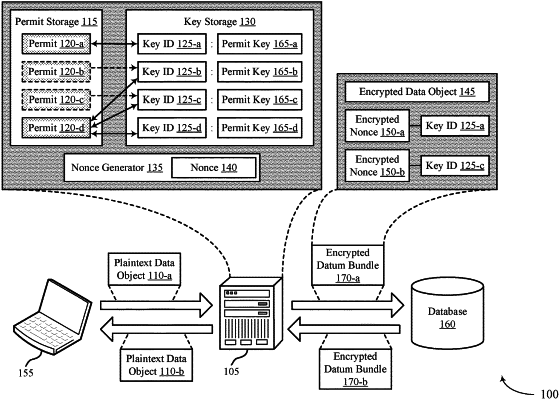| CPC H04L 9/0618 (2013.01) [G06F 21/602 (2013.01); H04L 9/0819 (2013.01)] | 20 Claims |

|
20. A non-transitory computer-readable medium storing code for managing data privacy at a system supporting a blockchain network, the code comprising instructions executable by a processor to:
store, at a set of peer nodes for the blockchain network, a smart contract configured for data processing permit management and a distributed ledger comprising a plurality of data processing permits and a plurality of permit keys, wherein each peer node of the set of peer nodes comprises the smart contract and the distributed ledger;
receive, at a peer node of the set of peer nodes, use r-specific data corresponding to a user;
query the distributed ledger of the peer node using the smart contract of the peer node for identifying a data processing permit of the plurality of data processing permits indicating permission to store the user-specific data;
identify, at the peer node and from the plurality of permit keys of the distributed ledger of the peer node, a permit key associated with the data processing permit in response to the querying identifying the data processing permit indicating the permission to store the user-specific data;
encrypt the user-specific data using a cryptographic nonce and encrypting the cryptographic nonce using the permit key based at least in part on the identifying the permit key; and
store the encrypted user-specific data and the encrypted cryptographic nonce in an encrypted database.
|